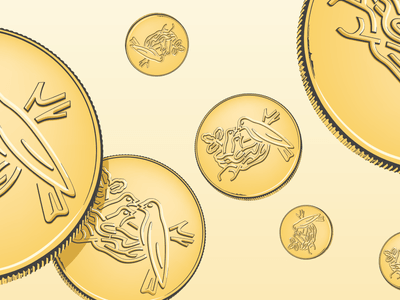If you are planning for later life, you may be considering what will happen to your spouse or civil partner (partner) and children or other beneficiaries on death. You may be concerned that your partner may need to go into care and that care home fees would deplete the value of the family home, meaning there will be little to nothing for the beneficiaries to inherit.
Equally you may be concerned that after death, your partner may remarry and leave all or part of your estate to their new family. For both these scenarios, the Life Interest Trust is intended to ringfence your assets, so that regardless of what happens to the survivor’s estate, at least your assets will pass to your nominated beneficiaries.
What is a Life Interest Trust?
Life Interest Trusts are created by a Will via a solicitor and so-called because they give a particular beneficiary the legal right to receive the income from, or to use assets comprised in, the Trust. This right normally lasts throughout the beneficiary's lifetime. Subject to the specific terms of the Trust, the right may terminate earlier, for example on the beneficiary's remarriage, or if the trustees exercise any overriding powers under the Will. The Will specifies what will happen to the remaining assets held in the Trust on the Life Tenant’s subsequent death. The beneficiary is often referred to as the Life Tenant.
The Life Tenant does not have outright ownership of the Trust assets and the trustees will retain control while the capital is preserved for the ultimate beneficiaries (or ‘remainderman’). The Trust assets will not be distributed under the Life Tenant’s own Will.
A couple may wish to include such a trust in their Wills if the marriage or civil partnership is a second or subsequent one. While income can be paid to the surviving spouse (the Life Tenant) throughout their lifetime, capital can be preserved for the children of the former marriage or civil partnership.
If a couple jointly-own property, it must be owned as tenants in common rather than as joint tenants. This is so the deceased’s share passes into the Trust contained in their Will, rather than automatically to the survivor. An existing joint tenancy can be severed and converted into a tenancy in common.
The Trustees
The trustees have the job of safeguarding the Trust assets and must always act in the best interests of the beneficiaries so care should be taken when choosing trustees. The Life Tenant can be a trustee, but should not be the only one. Adult children or other family members can be appointed although, if they also have a personal interest in the Trust, it may be preferable to appoint one or more independent trustees, to reduce potential conflicts of interest. Unless the Will provides otherwise, the trustees will have to act unanimously, so any one of them effectively has a power of veto.
As the trustees are usually given a power of appointment over capital, it will be helpful for them to have an indication of the circumstances in which this power might be exercised. Although not legally binding, the trustees will take into account the deceased’s wishes when exercising their powers, unless there are good reasons why they should depart from them.
The power to pay income or capital or to loan capital applies equally to nominated beneficiaries. For example, if the spouse does not need the capital, as they are now in a care home for example, but their child does (as they wish to pay off their mortgage) capital could be paid to them instead.
A Life Interest Trust needs to be properly administered which usually involves the trustees filing annual Tax Returns and issuing tax deduction certificates to the Life Tenant. The trustees should also maintain trust accounts and properly manage the Trust's assets.
Advantages
- A surviving partner’s estate can utilise the transferable Nil-Rate Band. For IHT purposes, the Trust assets are treated as an outright gift to the surviving spouse and so is not taxed and does not use any of the IHT allowance for the deceased spouse.
- Due to the nature of this Trust, there are no Periodic or Exit charges to pay unlike discretionary trusts. The Life Tenant can take advantage of this by making gifts to the ultimate beneficiary during their lifetime in order to mitigate IHT.
- A Life Interest Trust will ensure that the Trust fund eventually goes into the names of the nominated beneficiaries. In the event of the surviving spouse going into care or going bankrupt, the Trust fund is protected from the claims of creditors and Local Authorities as they only have a life interest in the fund and it is not owned by them. It is similarly protected from falling into the pockets of a new spouse by either being gifted to them, by being involved in divorce proceedings or by being left to the new spouse by Will.
- On the death of the Life Tenant, the nominated beneficiaries are equally protected from claims if the Life Interest Trust converts into a discretionary trust. With a discretionary trust, the trust assets are not owned by the beneficiaries so are protected from creditors.
- The Trust may include a power for the trustees to convert some or all of the Trust fund into another type of trust. So if IHT laws change in the future and make it more tax efficient for the fund to be in a different trust, such as a Nil-Rate Band Discretionary Trust, the trustees will be able to make that change.
- Some of the named beneficiaries may already have assets exceeding the Nil-Rate Band. In such a case rather than the capital being given to them, the trustees could instead loan to them or make occasional benefits once the discretionary trust arises. Alternatively others may wish simply to receive their share of the funds, in which case the trustees have the power to advance the capital.
Disadvantages
- Because the assets held in the Trust are treated as if they belong to the Life Tenant of the Trust for IHT, they are taxed at 40% on their deaths. However, the Transferable Nil-Rate Band and Transferable Residence Nil-Rate Band may help lessen the tax burden.
- As the trustees are the legal owners of the Trust assets, a deceased’s ISA holdings cannot automatically be transferred to the surviving partner through Additional Permitted Subscriptions. Instead the value of the Additional Permitted Subscription would need to be funded by the surviving spouse’s own resources or funded by a loan from the Trust assets.
- If the Trust allows the trustees to advance income and capital, the Trust assets could be used up during the lifetime of the Life Tenant, leaving nothing for the discretionary beneficiaries to benefit from.
- If during the lifetime of the Life Tenant they decide to dismantle the Trust, this is considered making a Potentially Exempt Transfer for IHT purposes, therefore must survive seven years for the assets to no longer be considered as part of their estate.
A Life Interest Trust in a Will for a surviving spouse or civil partner can provide an opportunity to allow the survivor to benefit from all of the assets which the couple presently enjoy between them, while protecting the first to die’s assets for his or her ultimate beneficiaries.
Tax implications of Life interest Trusts
 Inheritance Tax (IHT)
Inheritance Tax (IHT)
The deceased’s assets passing to the Life Interest Trust will qualify for the spouse exemption for the purposes of IHT. The Life Tenant is treated as if he or she owned the Trust assets for the purposes of IHT. If trustees distribute capital to the ultimate beneficiaries during the Life Tenant’s lifetime, this will be treated for the purposes of IHT in the same way as if the Life Tenant had made a gift.
To the extent, if any, that the IHT-free amount (Nil-Rate Band or NRB) has not been used on the death of the first spouse or civil partner, the survivor’s IHT-free amount can be increased by the “Transferable Nil-Rate Band”. An additional Residence Nil-Rate Band (RNRB) may also be available and a share of the deceased’s residence is left to direct descendants. The allowance is currently at £150,000 (for 2019/20 tax year), rising to £175,000 by 2020/21 tax year. Again, if unused on the first death, this allowance is transferable between partners.
On the Life Tenant's death, subject to any exemptions or reliefs which then apply, IHT will be payable on the combined value of the Trust assets and the Life Tenant's own estate. The trustees will be responsible for paying the proportion of the IHT payable in relation to the Trust assets.
 Capital Gains Tax (CGT)
Capital Gains Tax (CGT)
The trust will be liable to CGT currently at 20% (but still at 28% on residential property) in respect of any gains exceeding the trustees' available annual exemption (currently a maximum of half of the individual’s annual exemption of £12,000 for 2019/20 tax year, i.e. £6,000). If available in relation to the Life Tenant, entrepreneurs’ relief will reduce the rate to 10%. On the Life Tenant's death, the base value of the Trust assets will be uplifted to their then value without any CGT charge. This uplift wipes out any unrealised gains. Should any beneficiary become entitled outright to Trust assets, this will be treated for CGT purposes as a deemed disposal by the trustees.
 Income Tax
Income Tax
The trustees are generally subject to Income Tax at the basic rate, presently 20%, but pay at 7.5% in relation to dividends received. The trustees are not eligible for any personal or dividend allowances, nor can they deduct any trust administration expenses when calculating their tax liability. If the Life Tenant who is entitled to receive the income is taxable at the higher or top rates, the Life Tenant will have to account to HMRC for the further tax. A Life Tenant who is a non-taxpayer may reclaim tax previously paid by the trustees. Tax implications of Life interest Trusts
The information provided in this article is of a general nature. It is not a substitute for specific advice with regard to your own circumstances. You are recommended to obtain professional advice from a professional accountant or solicitor before you take any action or refrain from action.
To meet one of our Chartered Financial Planners to discuss tax and estate planning, please contact your investment manager who will be happy to arrange a meeting.





